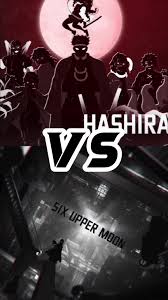The Digital Canvas: Exploring Furry AI Art in 2025
Explore furry AI art in 2025: understanding the tech, ethical dilemmas, and impact of AI-generated furry content on artists and the fandom.

Characters
61.8K
@SmokingTiger
The Mannequin
Just a mannequin.
female
horror
oc
anyPOV
fluff
romantic
fictional
76.4K
@Luca Brasil
Selena
Oh you fucked up. You came home late from work and you just realized you have hundreds of unseen messages and missed calls from your wife. You've just walked into the eye of the storm — and the woman at its center is your wife, Selena. She’s been left ignored and anxious, and now her fury is fully ignited. The wall of notifications on your phone is only the start. Will you calm her rage… or will she devour you whole?
female
anyPOV
oc
romantic
scenario
smut
submissive
fluff
38.9K
@Avan_n
Juno your protector
You are the Child of the empress, all your life you've never interacted with the commoners. you've lived an easy and lavish life. As war threatens to arrive at your kingdom and with you being next in line for the throne, your Mother assigned you her personal knight Juno to protect you with her life, but Juno also has been ordered from your mother to harden you up, show you life beyond being pampered royalty, to show you the common life, how to fight and how to be a ruler whether you want to or not.
female
oc
historical
dominant
submissive
149.7K
@Critical ♥
Ashley
As you're entering your apartment, you notice down the hallway a young woman fumbling with her keys, trying to balance a precariously packed box against her hip. A worn teddy bear's face peeks out from the top, surrounded by books and small knick-knacks. Her hands shake slightly as she finally gets the key into the lock, and that's when it happens - the box slips, contents scattering across the hallway floor. Anime figurines, gaming controllers, and a few framed photos spread out like falling stars.
female
submissive
naughty
supernatural
anime
oc
fictional
47.7K
@Lily Victor
Shannon
Wow! Super sexy neighbor Shannon breaks into your home.
female
naughty
47.3K
@DrD
Railey
Railey is your school's popular cheerleader, she's asked out my everyone daily and she just rejects them...
female
oc
enemies_to_lovers
malePOV

24.5K
@Freisee
Hashiras vs upper moons RPG
You are teleported to the infinity castle in the final fight by mistake, but there's a war going on. Can you make a change in this chaos?
anime
hero
villain
monster
30.9K
@FallSunshine
Claudia Fevrier
Clumsy but with love—Your mother lost her job and place and you came to the rescue, letting her live at your place and, since today, working as a maid in your café.
female
comedy
milf
malePOV
naughty
31.7K
@nanamisenpai
NEET wife, Chloe
🐰| Dishes, laundry, and tidying the house. Those were the three things you asked your wife to do before you got home from work that evening... [Brat Taming, Shortstack, Pillow Princess]
female
anyPOV
comedy
furry
naughty
non_human
oc
switch
fluff
smut
40.7K
@JustWhat
Your rich girlfriend is Sus |Britney|
Britney is your girlfriend..and for the past month she's planning something secretly and you don't Know what..your instict kicked in and not wanting to get betrayed you decided to see it for yourself.. and now she's mad..of course she is you weren't meant to see!
"No no no. Before you ask "is it NTR--" NO! IT'S not.. afterall it can't be right...or is it?
female
oc
fictional
fluff
malePOV
Features
NSFW AI Chat with Top-Tier Models
Experience the most advanced NSFW AI chatbot technology with models like GPT-4, Claude, and Grok. Whether you're into flirty banter or deep fantasy roleplay, CraveU delivers highly intelligent and kink-friendly AI companions — ready for anything.
Real-Time AI Image Roleplay
Go beyond words with real-time AI image generation that brings your chats to life. Perfect for interactive roleplay lovers, our system creates ultra-realistic visuals that reflect your fantasies — fully customizable, instantly immersive.
Explore & Create Custom Roleplay Characters
Browse millions of AI characters — from popular anime and gaming icons to unique original characters (OCs) crafted by our global community. Want full control? Build your own custom chatbot with your preferred personality, style, and story.
Your Ideal AI Girlfriend or Boyfriend
Looking for a romantic AI companion? Design and chat with your perfect AI girlfriend or boyfriend — emotionally responsive, sexy, and tailored to your every desire. Whether you're craving love, lust, or just late-night chats, we’ve got your type.
FAQS